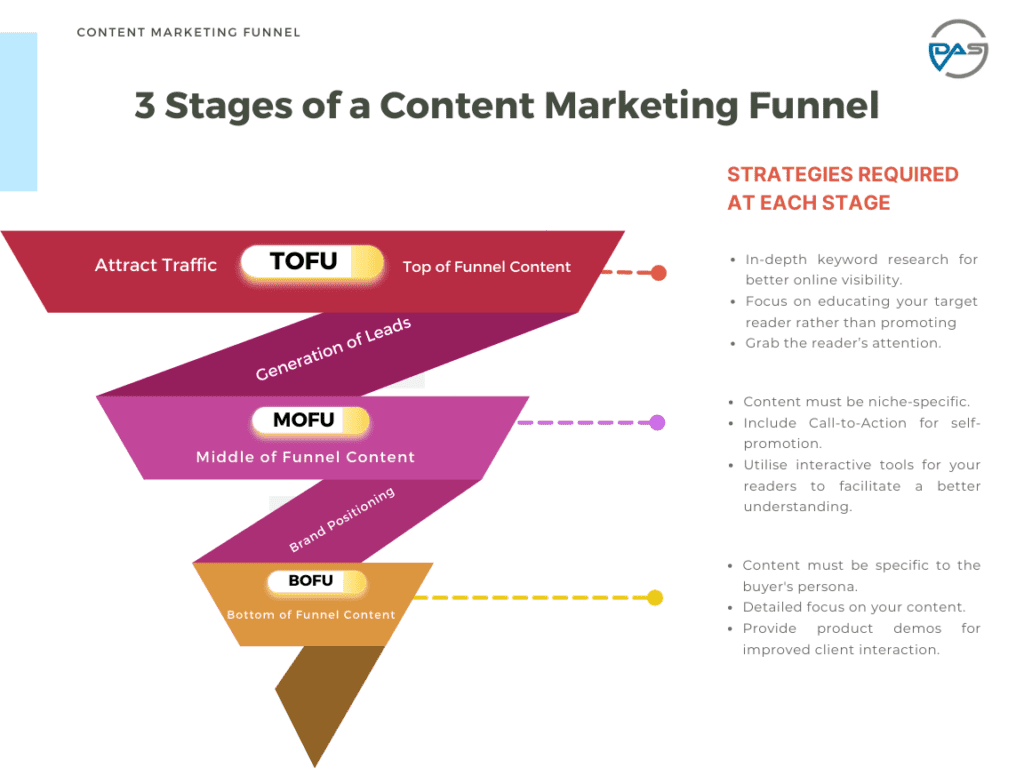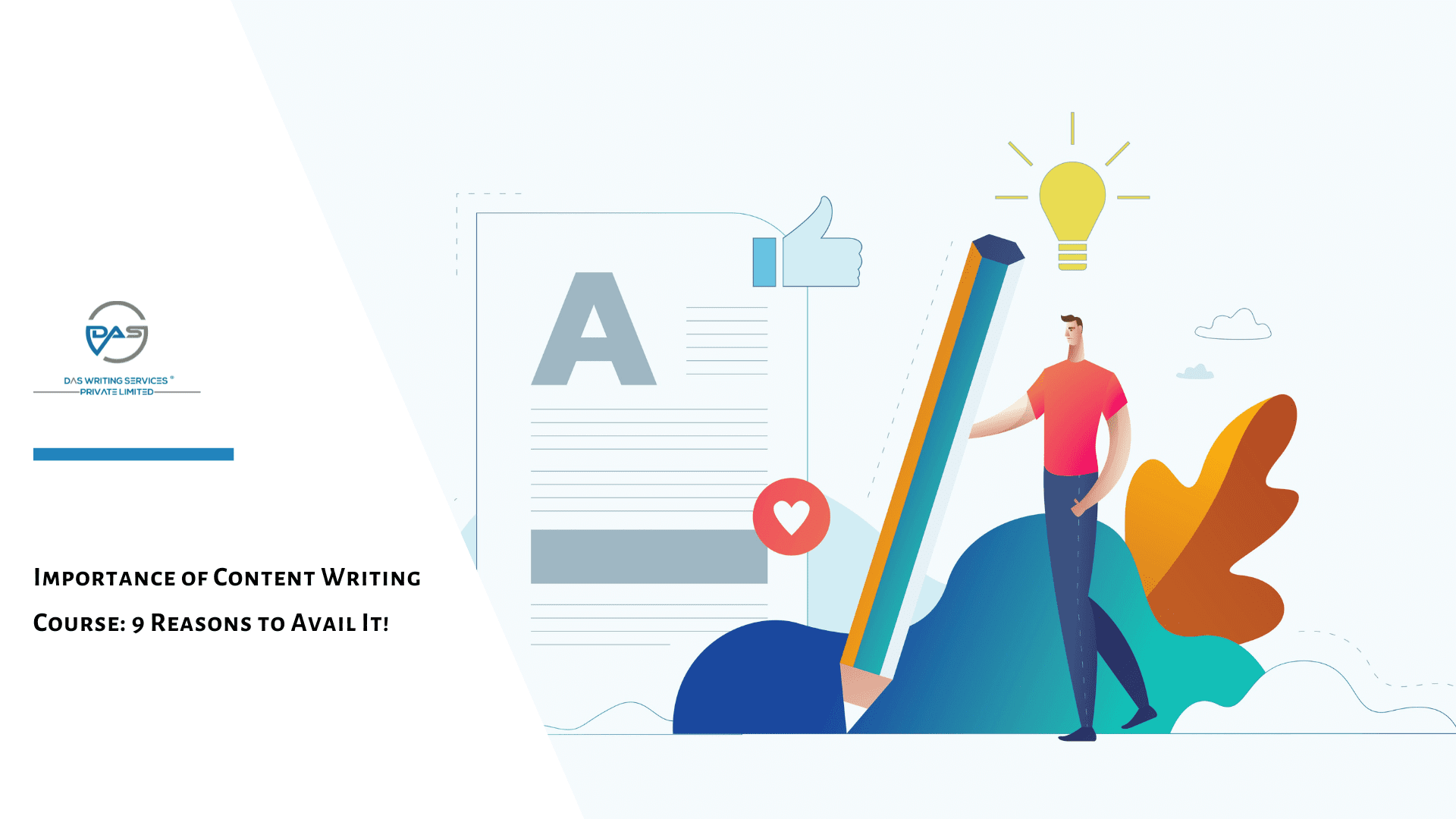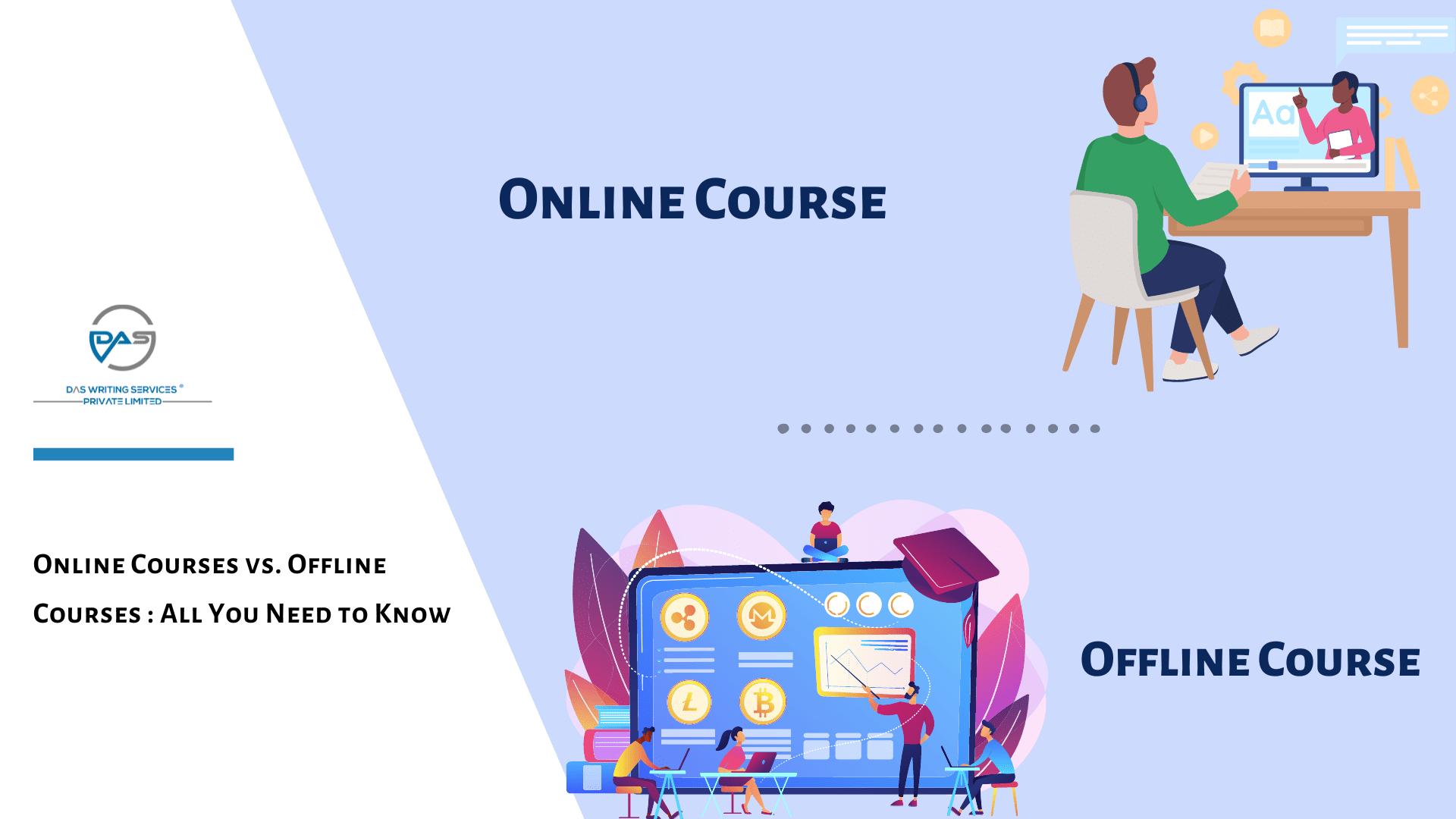In recent years, content marketing has become the new buzz word for businesses. With the many benefits of blogging, major corporates as well as up and coming businesses are opting for them. Yet, only 23% of a survey respondents have said their content marketing efforts were a success.
The reason why more than 70% business owners get less-than-satisfying results is due to the content strategy. A common mistake that newbie marketers make is not take into account users for every stage while creating the content plan.
As a result, buyers tend to leave from a stage of the funnel, making the entire campaign ineffective. In this article, we discuss content marketing funnel and have a look at different stages of the buyers journey to learn how you can effectively implement it to get success out of your marketing campaigns.
So, let’s get started!
What is a Content Marketing Funnel?
Content Marketing Funnel is the complete step by step process to generate brand awareness among potential customers, nurture them with quality information and unique value proposition to finally convert them into clients. All these can be seamlessly handled with multiple content types that guides the visitor through the sales funnel.
Getting new visitors to sign up for your product or services is one of the most crucial yet challenging parts of running a successful business. With a strategic content funnel, businesses can streamline the buyers journey from an audience to a customer.
If done right, content marketing funnel is a highly effective marketing strategy that offers precise micro-targeting and fosters a loyal relationship between the brand and its customers – ensuring better retention.
Based on the level of awareness and conversion potential, the funnel is further categorised into 3 stages.
3 Stages of a Content Marketing Funnel
Brands and organisations use different type of content to engage audiences at different stages of the buyer journey. With the help of the following three stages of the content-marketing funnel, marketers can to identify the unique pain points of audience at each stage and offer solutions around them. A successful marketing funnel guides the user with educational content and subsequently enocourages them to convert.

1. Top of Funnel Content (TOFU)
Goal of ToFu Marketing: Attracting Traffic
It is the first point of contact between the target audience and the brand where the user learns about the business. In most cases, the first contact is established with informational or entertaining content.
The initial point of the customer journey, the primary goal of the Top of the Funnel content is to promote your brand subtly. In this stage, brands create content for the potential target group in order to make the brand name recognisable.
Tips for successfully executing ToFu marketing are:
While framing the ToFu content, your goal as a marketer must be to answer the initial queries of the customers and build trust.
Focus on improving customer experience on the page. This will ensure returning customers which should turn into potential leads.
ToFu content utilised in the first stage are blogs, audio and video podcasts, print magazines, digital magazines, microsite, primary research, photographs, etc.
Efficient channels for traffic attraction are organic search, social media marketing, email marketing, paid advertising, influencer marketing, etc.
Create targeted content around your audience group for the social media handles.
Examples of ToFu Content:
Blogs/Articles
How-To Content
Social Media Posts
Infographics
Reels/Shorts
White paper
2. Middle of the Funnel Content (MOFU)
Goal of MoFu Marketing: Generation of Leads
In this stage, content creation is focused on the specific group which is already aware about your brand. Research suggests, this is the stage with the highest number of consumer drop-off.
For B2B industries, only 0.5 to 1% users actually convert into clients which suggests a staggering 99% users leave the marketing funnel. This is all due to not paying enough attention to the middle of the funnel group of audience.
Since most of the potential customers drop off around here, using effective content at this stage is a must.
Here are some strategies that a content marketer should integrate in MoFu marketing:
Create attractive lead capture forms across the commercial pages
Offer valuable piece of content, resources, trials or freemium version of your product to the audience to trade in their contact information.
Differentiate your brand from the competitors by highlighting your Unique Selling Points (USP).
Generate organic leads by providing educational resources, ebook, case studies etc.
Optimisation of lead generation through efficient channels like organic search, email marketing, social media marketing, PPC
Utilise email and social media marketing channels to nurture leads and keep them engaged.
Optimise landing pages with product details and promotions
Examples of MoFu content:
Email Newsletters
eBooks
Case Studies
Webinars
Podcasts
Reports & Surveys
Thus, MoFu marketing plays a major role in digital marketing to promote a smooth transition of your customers to the last stage of the content marketing funnel.
Bottom of the Funnel Content (BOFU)
Goal of BoFu Marketing: Converting Leads into Customers
BoFu marketing acts as a catalyst in finalising your customer’s purchase decision. In this funnel stage, the visitor is well-informed about your brand’s products and services. Also, a sizeable chunk of the users in this funnel stage are prospective buyers. It all seems like a dream come true, right?
But wait, the drop off rate in this funnel stage can be pretty steep for direct consumer centric companies.
Whether your business runs around end-consumers or other businesses, the final push to conversion is essential for a successful content marketing funnel.
To make sure that the prospective customers closes on the purchase, a business should integrate the following strategies for positioning their respective brands:
BoFu Content must be very specific as it would be beneficial in answering the queries of your customers
Create a sense of urgency to encourage prompt sales.
Showcase trust signals that would influence them to make their purchase
Support your customers with reviews that would enhance their experience, thereby leading to word-of-mouth marketing and repeat purchases
Marketers should include top-performing content, which includes product overviews, customer reviews, and success stories
Efficient channels for BoFu marketing include email marketing, organic search, and paid advertising
Examples of BoFu Content:
Attractive Landing Pages
Client Testimonials
Product Demo
Walkthrough Guides
Success Stories
Product Reviews
Benefits of Content Marketing Funnel
Creating a content marketing funnel assists marketers in building customer relationships with respect to each stage of the buyer’s journey. Here are a few benefits of producing marketing content for each stage of the buyer journey:
1. Visual Blueprint of the Customer Journey
The funnel allows you to optimize your content as per different stages of the buyer journey. It offers more control over the message and can adequately address the different pain points of the users.
2. Aligning the Content with the Target Customers
The funnel assists in categorising the suitability of the content concerning the advancement of the buyer through their journey.
3. Improved Customer Lifetime Value
The funnel is beneficial in developing content that would lead to larger conversion rates of customers. This ultimately increases the amount of money being spent by customers for buying products and services from the business.
4. Turning Customers into Loyal Brand Ambassadors
Content generation through the funnel results in finding loyal customers that involve themselves in repeat purchases. These customers are known as brand ambassadors of the business.
5. Improvement in Marketing Strategy
Assessment of the leads generated through the funnel will help the business understand the existing loophole in the current content marketing strategy and bring in improvement.
Therefore, as a marketer, once you are well aware of the customer needs and requirements, your content will strengthen the position of your brand.
Tips to Create an Effective Content Marketing Funnel
Your content must have the ability to nurture your relationships with the targeted customers. Here are some tips for creating a winning content marketing funnel:
- Tip 1: Focus on creating a blueprint of your content with respect to your customer’s journey from the initial stage of brand awareness to the last stage of the purchase decision
- Tip 2: Content has to be industry-specific which implies that as a marketer, you must have detailed knowledge of customer needs and requirements
- Tip 3: Ensure that the ToFu content is educative but engaging
- Tip 4: While developing the MoFu content, you should lure customers using discounts
- Tip 5: Focus on creating creative ways like providing product and service demonstrations to persuade customers until the end of the BoFu content
Takeaway
A content marketing funnel is becoming more relevant in the marketing world. Customers have become a lot more tech-savvy, and owing to the growing relevance of digitisation, extensive information on different businesses and their services is available.
Therefore, if you are looking forward to attaining a sustainable competitive edge, understand the customer journey using the funnel. This will ultimately enable you to improve customer experience with the help of a robust content marketing strategy.
Frequently Asked Questions
1. What is a content marketing funnel?
A content marketing funnel is a visual representation of different stages of buyer’s journey from unknown to a convertible lead. Businesses use content to inform and educate the target group and transform them into paying customers.
2. What are the 4 stages of the marketing funnel?
The 4 stages of marketing funnel are – awareness, consideration, conversion and finally loyalty. An effective marketing funnel nurtures an enduring relationship between the business and the client.
3. How to create a content funnel?
You can create an effective content funnel by performing thorough customer research and address and solve their queries and concerns by strategically placing relevant content.

Ritish Dutta is a seasoned Content Developer with over 7 years of experience in the industry. Currently, at Das Writing Services, he writes SEO-optimized content that caters to our diverse clientele. Ritish utilizes his critical insights and experience to talk about digital marketing, SEO content writing, content strategy, and AI.




Leave a comment